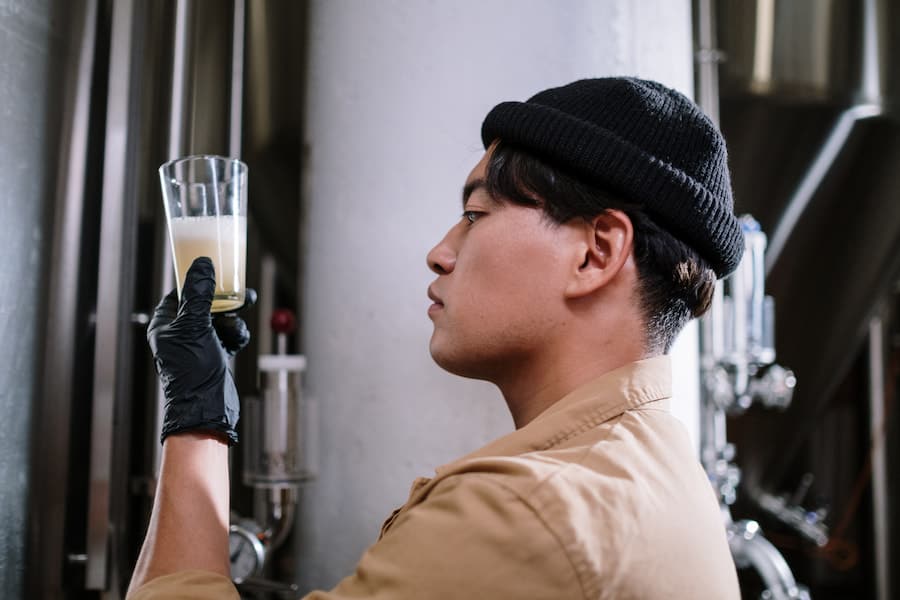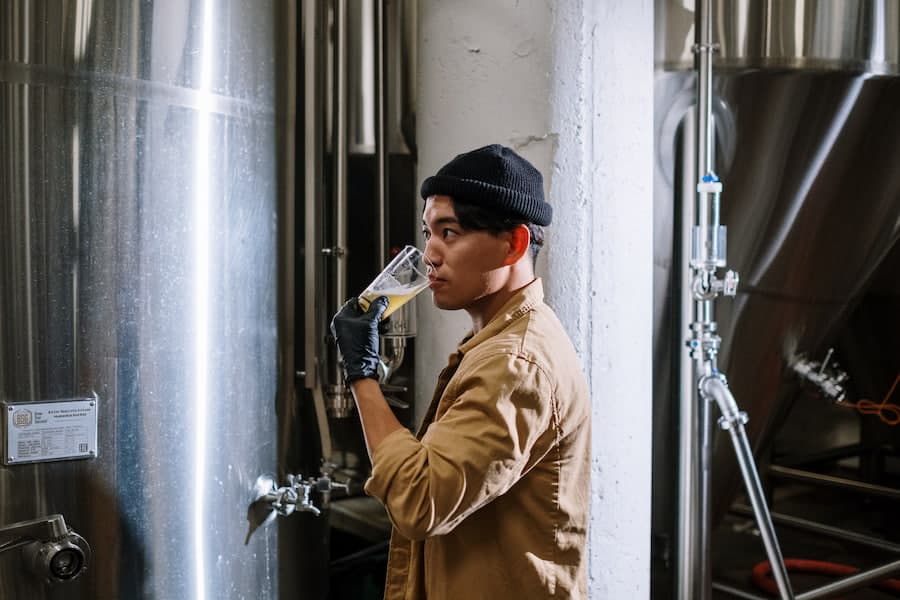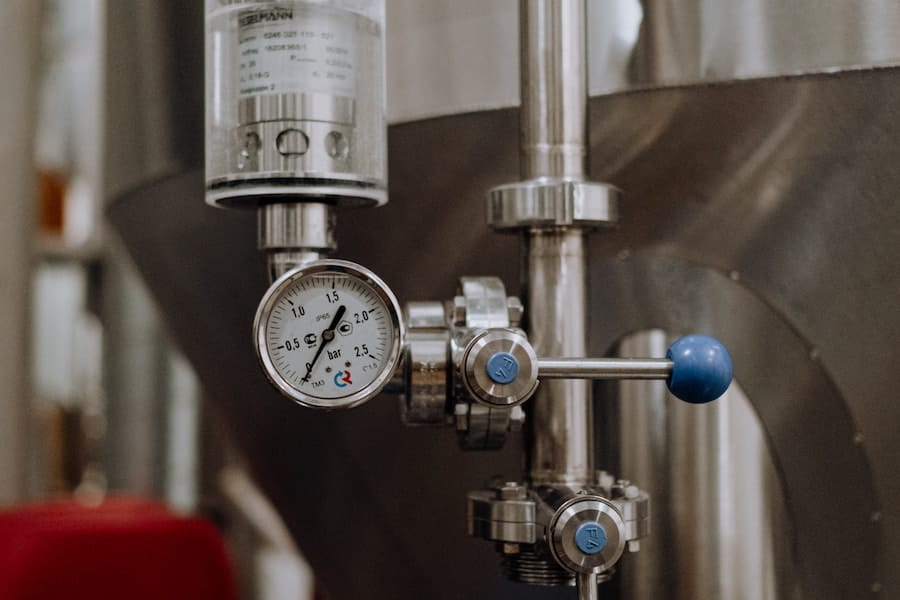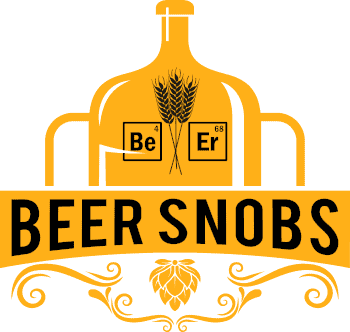If you buy something through a link in our posts, we may get a small share of the sale.
So many people have opted for the easy route to just buy a beer fermenting kit. However, this can be very misleading as it does not take into account your brewing style or what you want from your beer. So here are some tips on how to tell if beer is fermenting.
Contents
How to Tell if Beer Is Fermenting
Fermentation is an important part of making any kind of alcoholic beverage. It’s what transforms simple sugars in water into alcohol and carbon dioxide. Fermentation is one of the most fundamental processes that happen while producing all types of alcoholic beverages.

The fermentation process is divided into two stages: primary and secondary. The first stage occurs when yeast consumes sugar and converts it into ethanol and CO2. This process is called primary because there is only one batch of yeast involved.
Once the yeast has finished its work, it dies off, and another batch of yeast takes over. This second batch of yeast is known as secondary. Secondary fermentation involves multiple batches of yeast working together to produce more alcohol and carbon dioxide.
The Smell of Alcohol
The first sign that your beer is fermenting is when the alcohol comes through in the aroma. You should start smelling alcohol after about three weeks. If you’re using a kit with dry malt extract, then you’ll probably notice the alcohol much sooner than this.
Bubbles Appear
As the beer ferments, bubbles will begin to form. Gas produced by the yeast causes these bubbles. It becomes visible to the naked eye when the bubbles expand to a distinct proportion.
Therefore, as long as these bubbles continue to increase, your beer is still fermenting.
Beer Gets Fizzy
Once the beer reaches around 1% ABV, it becomes noticeably fizzy. At this point, the yeast has done its job and stopped producing alcohol. Now you need to give the fermentation process some time. Therefore, it will be best to allow the beer to rest until it finishes fermenting.
Beer Tastes Sweet
If you’ve used a kit, the sweetness of the beer may already be noticeable. However, once the beer hits 2-5% ABV, it begins to taste sweeter. This is because the yeast produces diacetyl, a chemical compound that gives beers a buttery flavor.

A Layer Forms at the Top of the Beer
If you’ve followed the recipe correctly, your beer should have formed a layer at the top. It acts like a lid protecting the beer from interacting with oxygen. It also helps to prevent sediment from settling out.
You can use a hydrometer to measure the gravity of your beer. To do this, simply place the hydrometer in the middle of the beer and wait for about 10 seconds. Then read the number on the scale.
What Would Be the Cause of Fermentation Not Taking Place?
Fermentation can fail for many reasons. Let’s discuss some of the most common reasons as to why your beer may fail to ferment.
Too Much Sugar
Sugars are converted into alcohol during fermentation. But too much sugar can cause problems. For example, if you add too much sugar to your wort, the yeast won’t get enough food and may die.
Yeast Not Working Properly
Yeast needs specific conditions to thrive. If those conditions aren’t right, the yeast won’t grow properly or even survive.
Poor Temperature Control
Temperature plays a significant role in how well your yeast works. Yeast grows best between 68°F and 75°F. Below 60°F, the yeast cannot multiply quickly enough to make good beer. Above 80°F, the yeast will stop growing.
Poor Air Circulation
Air circulation is essential for keeping the temperature stable. Without air circulating, the yeast can’t breathe and die.
Poor Water Quality
Water quality affects the health of your yeast. If the water contains high levels of chlorine or other chemicals, the yeast will not reproduce properly.
Bad PH Level
A low pH level can slow down the growth of yeast. You can adjust the pH with lactic acid bacteria. Lactobacillus makes the environment more acidic, which slows down the yeast’s growth. You can easily monitor the pH level with a pH meter.
What Happens When You Add Malt Extract Instead of Grains?
The same thing that happens when you add any grain. Malt extracts contain enzymes that convert starches into sugars. They’re just more straightforward to use than whole grains.
How Long Does It Take for Beer to Start Fermenting?
That depends on the type of yeast you used. Some strains of yeast produce carbon dioxide very fast, while others don’t. Most commercial kits include a packet of yeast that the manufacturer has tested.
The priming step is optional, and most people skip this process. Just bottle your beer after primary fermentation is complete.

Why Does Beer Taste Different After Bottling?
Your beer was exposed to oxygen after being bottled. Oxygen oxidizes the compounds in the beer. As a result, they change color and flavor.
Bottles break easily. Make sure that you buy bottles explicitly made for home brewing. Also, avoid using regular soda bottles because they are not designed to withstand pressure.
Conclusion
If you want to brew great-tasting beer, you have to understand what goes into making a batch. It’s easy to learn how to brew at home, but it takes time and practice to perfect your skills. So keep practicing until you’ve mastered all aspects of home brewing.

